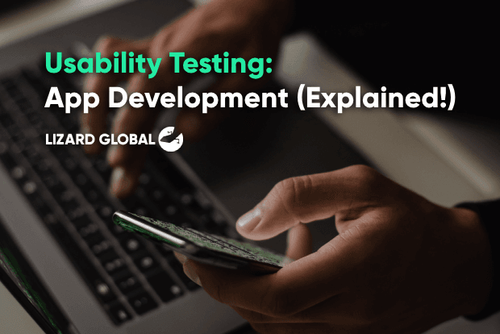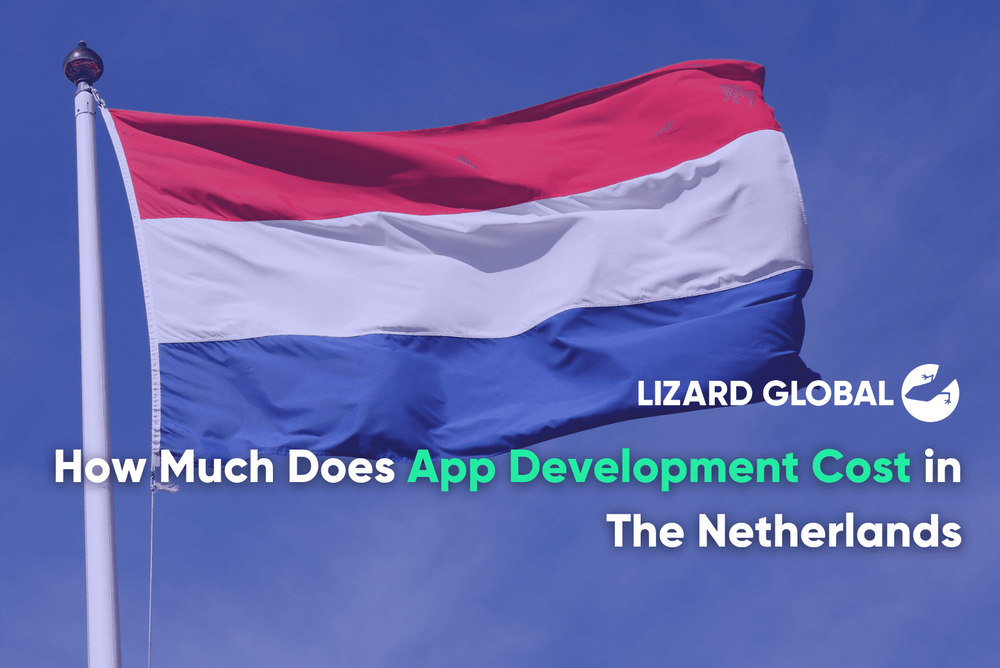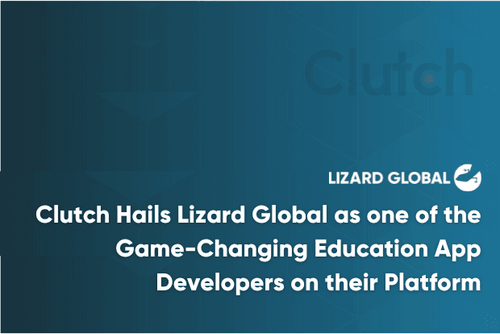What Is Web 4.0? Worth Explaining Now?
Get the latest updates about our blog posts.
Subscribe so you don’t miss out!
Follow Lizard Global on Facebook, Instagram, and LinkedIn.
There are various ways to define the Internet era. What we now refer to as Web 1.0 was originally known simply as the Web. The first websites, portals, and online services were created, but users were only able to view the content with no opportunity to engage directly. It was a one-way communication network.
Then comes Web 2.0, with all of the apps like blogs, forums, and podcasts as well as the creation and spread of social networks, which introduced new forms of participatory communication. Communities started connecting and exchanging content online as a result of the invention of these fresh instruments, which led to the publishing of the content itself. By establishing new procedures and dynamics in what we refer to as a collaborative web, the user transitions from being a passive actor to taking the lead in the development and administration of internet-based content.
The impacts of Web 3.0
Web 3.0 is the third level that we have reached. It was originally referred to in that way in 2006, and it is characterized more by several variables than by a specific technology. The key phrase is "connection."
- The semantic web is a digital space where data and information are connected and arranged to allow for autonomous processing. In other words, a web where computers can read and comprehend content.
- Artificial intelligence refers to all emerging technologies that are based on this concept and are capable of interacting with users in an almost human manner.
- A sociological notion known as "enhanced web" describes how, in comparison to all other media up to this point, the web is thought to be the communication medium that can influence reality the most.
- The user and the web were formerly two distinct poles, but they have now blended through an ongoing process of co-creation.
- 3D web, where the evolution of the web into three-dimensional spaces after "Second Life"
- Web as a database made users see the potential to use the network as a sizable informational database that apps can readily make available to users and enhance online research.
All of these elements help define the Web 3.0 period as one in which the internet profoundly entered our lives, becoming an essential component of our daily lives where we are always connected, anytime and anywhere.
What is Web 3 and how did it change the Internet as we know it? We have the answers here.
And now Web 4.0? What is it?
The fourth iteration of the World Wide Web, known as Web 4.0, is distinguished by a more participatory and collaborative approach to web creation.
Web 4.0 apps are made to be easier to use and facilitate rapid information and idea sharing amongst users. Web 4.0 is a change from traditional web development paradigms to a user-centered, collaborative approach through the use of social networking sites, such as blogs, wikis, and video-sharing websites.
What does Web 4.0 entail for you and your company?
Though still in its infancy, Web 4.0 is still a work in progress and shouldn't be heavily discussed just yet. It still lacks a formal definition.
The concept of ideal decentralization describes a network or system in which no single entity is in charge or has the ability to decide what is best for the whole thing. Rather, decision-making and authority are shared among several stakeholders, increasing the difficulty of any one individual or organization controlling or manipulating the system. Web4 could be this perfect condition.
Because Web4 is not a commonly accepted term, its meaning can vary based on the situation. Nonetheless, the phrase "Web4" has been utilized to describe the next iteration of the World Wide Web, which would be even more decentralized and prioritize AI, the semantic web, and the Internet of Things, among other things.
Web 4.0: AI-powered new decentralization
The goal of Web4 is to provide a more autonomous and decentralized online that facilitates more direct communication between people and their devices without the need for "middlemen".
This could involve creating new digital interactions and services that aren't governed by centralized organizations by utilizing decentralized technologies like distributed systems, peer-to-peer networks, and blockchain.
Web4 may also put more of an emphasis on AI and machine learning, which would enable more dynamic and adaptive systems to learn from data and get better over time.
What’s different about Web 4.0? (Features)
Greater decentralization of the web has several benefits, such as:
- Improved security and privacy as a result of individuals' increased control over their data and interactions online
- Systems that are more transparent and open since there is no single point of failure or control
- Increased robustness and resilience since the network can keep running even if some of its components fail
- More competition and innovation since there are fewer obstacles to entrance for new firms
- Construct a circular crypto-economy that might eliminate the need for fiat on and off ramps by bridging physical and digital divides.
- Given its "symbiotic web" nature—a symbiotic link between humans and machines—it may even make use of direct brain-machine interfaces.
Web4, which expands on the decentralized technology of Web3, is viewed as the next development in the World Wide Web. With Web4, the technical underpinnings are abstracted away, resulting in a simplified and seamless user experience.
What Is Web 3.0 being used for? Check out the hottest questions & answers for Web 3.0 here.
The Technological Foundations of Web 4.0
Web 4.0 is diligently working towards enhancing web accessibility, particularly for individuals with disabilities, empowering them to seamlessly navigate web content with the aid of assistive technologies. Although Web 4.0 is in its nascent stages, it has already exerted a significant influence on our internet usage patterns. Anticipated are further transformative adjustments that will amplify the user-friendliness and interactivity of the web.
Advancements in Brain-Computer Interfaces (BCIs)
Brain-Computer Interfaces (BCIs) represent a groundbreaking interface enabling human-computer interaction through neural activity. Functioning by discerning and translating brain signals into computer-understandable commands, BCIs, while still in their developmental infancy, harbor immense potential to revolutionize technological interaction. Envisaged applications span communication, prosthetic device control, and entertainment, holding considerable promise for assisting individuals with disabilities and augmenting the broader landscape of human-computer interaction.
The Evolving Metaverse Landscape
The metaverse emerges as a dynamic virtual realm forged through the convergence of multiple online communities and users. This three-dimensional environment, accessible to anyone with internet connectivity, undergoes constant evolution as participants contribute and generate new content. The metaverse serves multifaceted purposes, encompassing social networking, gaming, education, and business. This innovative platform presents a distinctive avenue for interpersonal and computer-generated interactions, poised to redefine our engagement with others and the surrounding world.
The Pinnacle of Artificial Intelligence
Artificial Intelligence (AI), within the realm of computer science, is dedicated to crafting autonomous and intelligent machines. The pursuit of AI involves unraveling the complexities of imbuing computers with intelligent behaviors. The applications of AI extend to tasks challenging or unattainable for humans, such as natural language comprehension and object recognition. Already integrated into diverse fields like healthcare, finance, and manufacturing, AI is destined to wield an even more profound societal impact as it progressively integrates into myriad facets of our daily lives.
The Transformative Impact of the Internet of Things
The Internet of Things (IoT), a network interlinking physical devices, vehicles, and household appliances, embeds electronics, software, sensors, and connectivity tools to facilitate data exchange. A transformative force reshaping our existence, IoT has permeated our daily lives through wearable devices like fitness trackers and smartwatches, collecting and transmitting data for informed lifestyle choices. Forecasts predict a surge in IoT prevalence, with over 50 billion connected devices by 2030, ushering in expansive opportunities for both businesses and individuals alike.
Advancements in Web 4.0:
Elevated Cognitive Capabilities and Personalization: Web 4.0 stands poised to leverage sophisticated artificial intelligence and machine learning algorithms, offering an unparalleled level of personalized and meticulously tailored content and services to individual users.
Augmented Interactivity: The evolution to Web 4.0 promises a heightened level of interactivity, facilitating immersive experiences through technologies such as virtual and augmented reality. This enables users to engage with information and services in novel and groundbreaking manners.
Seamless Fusion of Physical and Virtual Realms: Web 4.0 is anticipated to bridge the divide between the physical and virtual realms by harnessing the capabilities of the Internet of Things (IoT) and other cutting-edge technologies. This integration will connect real-world objects and environments with digital platforms seamlessly.
Enhanced Decentralization and Democratization: Web 4.0 is envisaged to usher in a new era of decentralization and democratization in the realm of information and services. This entails a reduced dependence on centralized platforms, emphasizing peer-to-peer networks and decentralized protocols.
Augmented Security and Privacy Measures: The advent of Web 4.0 heralds the application of advanced cryptographic technologies and decentralized architectures, ensuring robust security and privacy protections for user data and communications.
Drawbacks of Web 4.0:
Escalated Technological Dependence: The progression to Web 4.0 may lead to an intensified reliance on technology and digital platforms, where users depend on highly customized services meticulously designed to cater to their individual requirements.
Heightened Surveillance and Control Risks: Web 4.0 introduces increased avenues for surveillance and control, as intelligent and personalized services amass and scrutinize vast quantities of user data, potentially being utilized to manipulate or influence user behavior.
Elevated Complexity and Technical Sophistication: Web 4.0 is likely to be characterized by increased complexity and technical sophistication compared to its predecessors, necessitating highly skilled developers and engineers for its design and maintenance.
Potential Aggravation of Inequality: The implementation of Web 4.0 has the potential to exacerbate existing societal inequalities, as highly personalized services cater to the preferences and needs of the most affluent and influential users.
Augmented Vulnerability to Cyber Threats: Web 4.0 may exhibit heightened susceptibility to cyber attacks, given its interconnected and intelligent systems, which offer malicious actors an expanded array of potential targets.
Should we already be discussing Web4?
A decentralized economy is fundamentally based on the idea of true decentralization, which implies that no central body or middleman oversees or regulates the network or its transactions.
As a substitute, decision-making occurs through consensus processes like voting or proof of work, where authority and control are divided among network members.
Because the network is decentralized, users have total control over their assets and it is resistant to fraud, censorship, and other bad acts.
With Web4, we may have the opportunity to rethink decentralization, enhance and reform decentralization, and rediscover the actual purpose of decentralization.
Need a hand?
Evidently, Web 4.0 holds great promise, and it won't be long until artificial intelligence (AI) transforms how we interact with the Internet into a more sophisticated and autonomous experience. Interested in learning more about Web 4.0? Or would you like to hire professionals in the industry to create your own application utilizing the most recent innovations and technologies? Contact us today to schedule a free digital consulting appointment.

Curious about the cost of your dream app? Let's crunch numbers together!
We get it, pricing can be a puzzler. But fear not! Our App Cost Estimator tool is here to sprinkle a bit of magic on your budgeting journey. It's as easy as picking your features and voilà—your app investment laid out in front of you. Click, calculate, and get ready for the appventure of a lifetime.
Want to find out how much it costs to build your dream app or web app?




